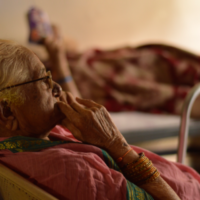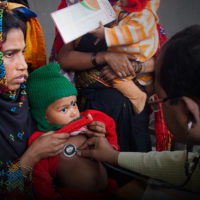MENTAL health issues are disabling to the persons affected and burdensome to the families. People affected by mental disorders experience stigma and discrimination both within and outside the family. This is because of persistent and progressive disability in two-thirds of persons with severe mental health problems and poor functionality. Both the factors are related to the lack of early treatment following the onset of illness.
The problem of mental illness in India
Evidence suggests that if the patients are treated within four weeks of the onset of illness, recovery is possible to the extent of 70%. According to The National Health Survey of India 2015-16 by the Government of India’s Ministry of Health, the treatment gap (the difference between the number of people who need care and those who receive care) for mental disorders is close to 80% which is very high compared to developed countries.
The survey says that the prevalence of people with mental illness stood at 10.6%, and for the people who said that they had faced some form of mental disorder in the past was 13.7%. The survey also found that the prevalence of mental illness was higher in males as compared to females.
A study by the World Health Organisation (WHO) in 2001 said that one in four families anywhere in the world are likely to suffer from mental/behavioural/neurological disturbances at any point in time. Both the reports indicate a very high prevalence of mental health issues.

The government and mental health
Over the years, the Government of India has made significant infrastructure development to meet the challenges of mental health care in the country. There are 350 government medical colleges with functioning departments of psychiatry; 728 districts in India have mental health programmes; there are close to 11,000 psychiatrists, 9,000 psychologists and about 6,000 social workers in India. But all these are simply not enough for a country with a population estimated at 139 crore.
The investment in mental health care is significantly less in comparison to other programmes. The budgetary allocation for the National Mental Health Programme (NMHP) has remained the same at ₹40 crore for the last two years.
In other words, India spends only around 0.05% of its health budget on mental healthcare programmes. It is unfortunate to note that even this allocation is not completely spent on service delivery. The state governments have allocations of less than 1% for mental wellness in their health budgets, and even this is not spent adequately due lack of clear guidelines.
Why is mental health not a top priority?
Mental health is considered a low mortality condition, and often thought of as untreatable. Therefore, the investment is poor. On the contrary, incidents of suicide of untreated depression is about 20% in a calendar year. Similarly, 10% of people with schizophrenia have mortality rates.
It is unfortunate that the policy makers do not consider this figure of mortality as being significant. In a study on health valuation of different conditions such as schizophrenia, diabetes, tuberculosis, quadriplegia, leprosy etc., it was found that schizophrenia had the highest degree of disability in comparison to others. And the quality of life of people suffering from schizophrenia was closer to death.

Investment in mental health is low because people suffering from mental disorders are voiceless entities in the society, and their family members also suffer in silence. Therefore, the demand for outpatient and in-patient services, rehabilitation, home care, crisis intervention, support for disability allowance and social care needs is abysmal. Consequently, the government does not feel the pressure to invest in this critical health sector.
The mental health scenario in India is precarious. The situation can be improved by collaborative efforts of the government, non-governmental organisations, philanthropies, and the public, including families having members with mental disorders.
Staying silent is no longer an option
A person suffering from mental health issues requires regular psychiatric care and rehabilitation, and lack of these kinds of services can cause considerable strain on the family. In many untreated cases, the chances of people affected by mental health problems becoming homeless are also very high. A better system of mental health care can be brought about in India through greater demand by the service users and their families.
Welfare and support cannot come from civil society alone. People who face mental health issues and their families should organize themselves at taluk and district levels and demand their share of outpatient care, rehabilitation services, and long-term care facilities. The government’s health and social welfare departments should allocate resources and ensure that the funds are utilised with robust monitoring and evaluation systems in place.
Mental health professionals have to play the vital role of providing effective leadership and good governance to use the allocated funds.
Established in 2000, Give is the largest and most trusted giving platform in India. Our community of 2.6M+ donors have supported 2,800+ nonprofits, impacting 15M+ lives across India.
Discover more from give.do
Subscribe to get the latest posts to your email.


